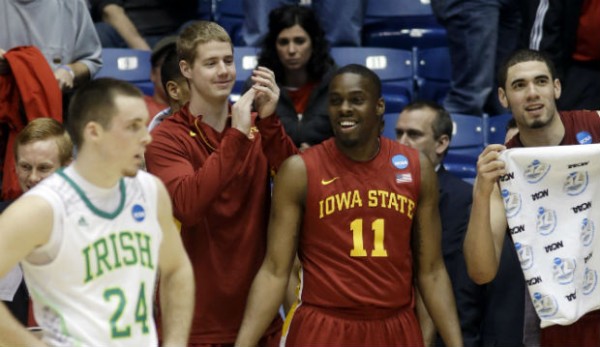After Puzzling Summer Rulings Is It Time To Wave Goodbye To The Waiver Process?
Posted by nvr1983 on September 10th, 2013Bennet Hayes is an RTC columnist. He can be reached @HoopsTraveler.
Selection Sunday rarely leaves us unsatisfied. Sure, there will be questionable inclusions in the field and a handful of notables left out of the bracket, but give me a shout when you find a college basketball fan who counts themselves as a Selection Sunday detractor. The same cannot be said when it comes to the fad that is quickly becoming college basketball’s second most important selection process – the immediate eligibility transfer waiver. Maybe we are all a bit starved for relevant college hoops information, but in these dog days of summer the NCAA’s administration of the transfer waiver has become a definite hot-button topic. Two cases in particular have stirred the pot: the rejection of Rutgers transfer Kerwin Okoro, who lost two family members within a year and sought to be closer to the rest of his family, and the denial of wannabe Minnesota Golden Gopher Raheem Buckles due to FIU’s APR issues, but only after a former FIU teammate was granted the same waiver that Buckles sought. Many different outlets have weighed in on the issue, but only one thing is clear – there is no perfect solution.

Kerwin Okoro’s Failed Immediate Eligibility Hardship Waiver Has Left Many Asking For Answers From The NCAA (Credit: WNCN.com)
One of the more supportive analyses of the NCAA and their waiver selection process comes from John Infante, who believes that in the big picture, “the waiver system is one of the NCAA’s success stories.” He does admit to the many individual failings when it comes to the enactment of the system and clamors for increased transparency, but the above point is one that many seem to miss. There may have been a number of cases, especially of late, that don’t seem fair, but we forget how many lives have been aided due to the existence of the waiver. Critics of the mere existence of the hardship waiver will argue that a player is free to transfer closer to home even without a waiver, but sitting that year out on the court is a sacrifice that should not be overlooked. Most of these kids have spent their entire lives building for these four years of basketball. Even severely ill (and selfless) parents may seek to avoid them missing that year on the floor, and potentially at all costs. The hardship waiver removes that gut-wrenching decision for student-athletes and their families. As Infante argues, it would be great to know a little more about the process behind the decision-making, but there are student-athletes out there whose lives have been unequivocally improved as a result of the waiver.
While many, like Infante, believe that the hardship waiver has been an overall positive for college athletics, there seem to be just as many that advocate for the NCAA abolishing the practice. Just this week, ESPN’s Dana O’Neill eloquently directed her message to college sports’ governing body, saying that “when it comes to determining hardship, you don’t belong, NCAA.” Even the most aggressive of hardship waiver supporters has to admit that what we know of the evaluation process puts it on shaky moral ground. How can NCAA fact-finders objectively measure how close players are to ill family members, or even how sick those relatives are in the first place? The subjectivity becomes even more apparent when comparing individual cases side-by-side, which is where the reality of unfair rulings starts to feel inevitable. But does a few unfair – at least perceived to be unfair – rulings mean the entire system is a failure? There may be no question more key to the discussion than this one.
The NCAA has no perfect move here. How is it possible to keep the system in place and add transparency, while still maintaining the privacy of the players involved? However unfair some of these decisions have been, it feels even more heartless to publicly air the details of the delicate family predicaments they are all facing. On the flip side, does the complete elimination of the hardship waiver do the sport a favor? There will be no more public second-guessing, but does one or two perceived slights really undo the good that accompanies the dozens of successful waivers each offseason? No easy answers exist to any of these questions, but perhaps we can view this selection process (with the caveat that this one means a little more than anything that happens on the court) a little like we do that one that wraps up on a Sunday in March. The NCAA Tournament doesn’t get to happen before four or five or ten teams that believed they merited inclusion are told they will not be part of the event. Oftentimes they will have a case; it’s simply the nature of a subjective process that deserving parties will sometimes be deprived of their prize. As admitted earlier, the stakes are undeniably heightened when it comes to a player’s ailing family, but it’s important to fully consider that big picture. There have been, and will continue to be individual failures of the system. But for every failure there have been and will continue to be many successes – a fact that should never go unnoticed.










































